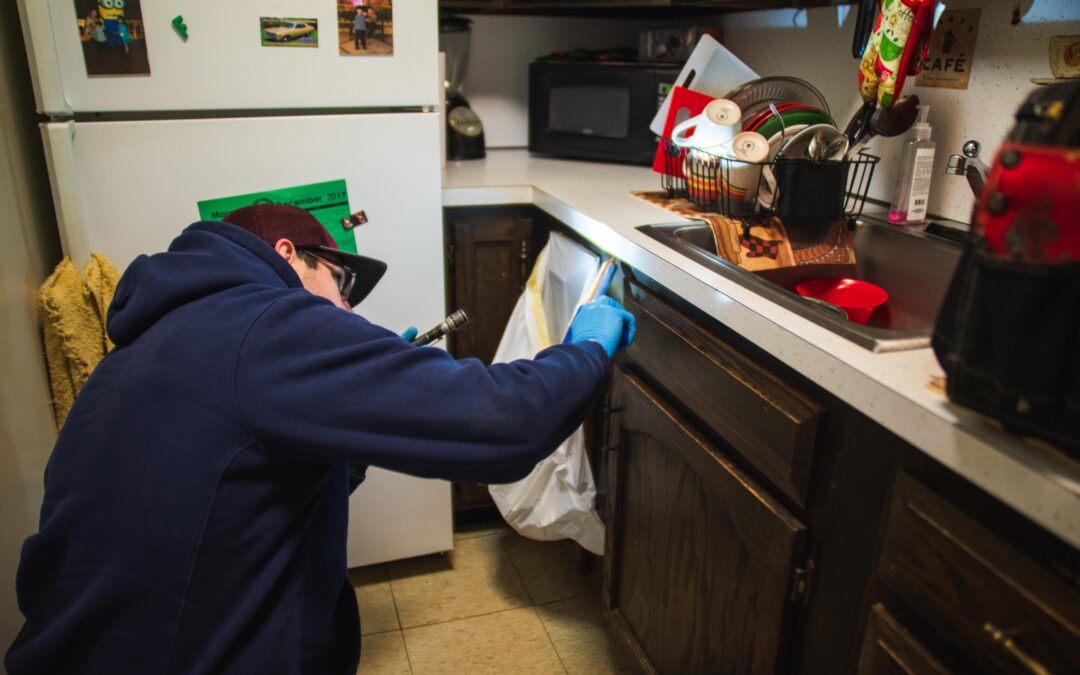The insects commonly known as silverfish thrive in close association with humans in urban and suburban areas throughout the world. More than 120 silverfish species have been documented worldwide, 18 of which can be found in the US. The most commonly encountered silverfish pest species within Massachusetts homes include common silverfish (Lepisma saccharina), grey silverfish (Ctenolepisma longicaudata), and fourlined silverfish (C. lineata). Silverfish are among the most bizarre looking insect pests due to their primitive morphology, which is more akin to a marine organism than a modern insect species. They have a flat, scale-covered, metallic body that progressively narrows to a tail-like rear, giving them a fish-like appearance.
During the day, silverfish remain hidden in moist areas, such as basements, beneath sinks, within bathroom wall voids, and in poorly ventilated attics. At night, silverfish emerge from their concealed harborages to seek out food sources, which include all human foods, particularly foods rich in starch, protein and/or sugars. The feeding habits of silverfish make them economically costly insect pests, as they readily consume paper materials, especially paper that has been glued, such as wallpaper, bookbinding, and artwork. Silverfish also eat away at a variety of fabrics like furniture upholstery and clothing. Fourlined silverfish are known to disperse into all indoor areas, as they are relatively less dependent on humidity. Silverfish infestations can become quite extensive due to their acclimation to human dwellings and their ability to reproduce indoors. Silverfish and cockroaches exhibit similar indoor pest behaviors, and each are controlled by means of the same tactics, such as moisture reduction, desiccant dusts, and baits.
Since silverfish are skilled at remaining hidden within homes, infestations are often first noticed when homeowners encounter peculiar property damage inflicted by the pests. Silverfish eat wallpaper glue, causing wallpaper to flake off, and they often infest boxes of stored books and shelved books where they eat paper and book binding. Silverfish remove glaze on paper and chew holes in paper, which is the most commonly encountered form of silverfish damage. Paper damaged by silverfish can be recognized for having irregular holes, not edges, fecal smears, detached scales, yellow marks, and shed skins. Silverfish readily eat holes in starched cotton, linen, silk and certain synthetic fibers.
Have you ever found items that had sustained silverfish damage?

